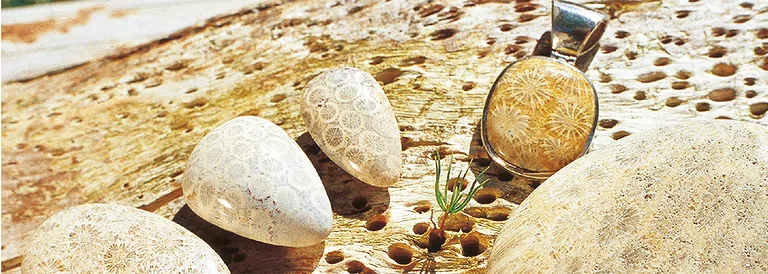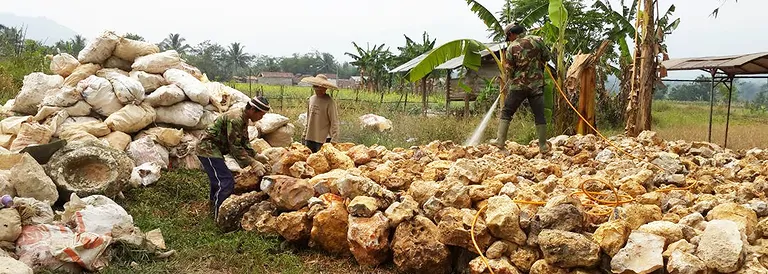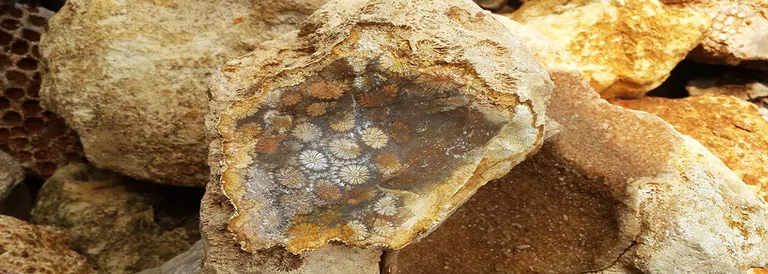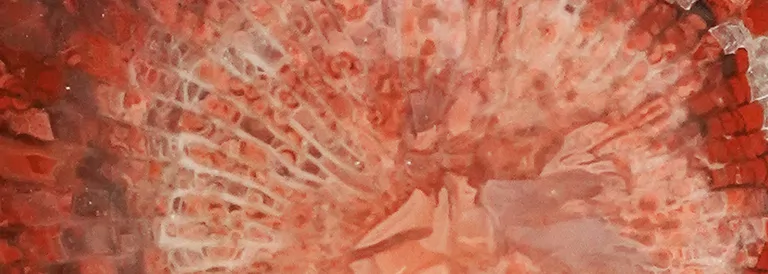
Stone of the Month July 2025: Petrified Coral - Meaning and bearing
Life outdoors reaches its climax and everything is bursting with strength and energy. Bright colors, energy and warmth fill out the last cold and dark corners. Our efforts and ideas of the first half of the year are showing tangible results - we can lean back relaxed and enjoy our first successes.
When we work hand in hand with others on the common success, the Petrified Coral is a valuable helper for us. The stone promotes the sense of community, in which selfish motives and petty discord in the background are pushed into the background. The togetherness is in the foreground, fears of contact are reduced and in the peaceful cooperation of all forces great things can arise for the benefit of all. Therefore Petrified Coral is used gladly, in order to develop the Team spirit and cohesion in a group to strengthen.
Wholesale assortment of petrified coral items, e.g. tumbled stones, donuts and stringed beads
Fossilized Coral items have not been cut from endangered or protected species, but come from fossilized Petrified Coral found in Indonesia as large rough stones. Petrified Coral, also known as "Petoskey stone", Coral Stone or Fossil Coral, is a very good alternative to recent coral, whose populations are threatened in many places, as is the case with foam coral.

Locations of fossilised coral
Most pieces of Petrified Coral that come into the trade are from the Jambi region on the island of Sumatra in Indonesia. There, the coral grew on the seabed about 15 million years ago. Due to tectonic changes about 3.5 million years ago the seabed was up to the today's place of discovery lifted.
From the large quantities of available rough stones, only the most beautiful stones that show the typical circular pattern of Petrified Coral are selected. When sawing and grinding the stones, the direction of the "grain" must then be observed. The mostly round to hexagonal structures are the structures of the coral that have been preserved to this day.

Tumbled stones, donuts and stringed beads and more petrified coral at wholesale prices
Mineralogical profile of Petrified Coral
Chemical formula: SiO2
Mineral Class: oxide, quartz group.
Formation: secondary to replacement of original coral calcium carbonate with silica
Color: cream-colored, beige, brown, yellow to reddish, silver grey, dark grey, black
The colors of fossil coral are characterized by mineral deposits that were incorporated during the fossilization process. Beige, brown and red tones are caused by iron oxides such as limonite or hematite. Silver-grey, darker to black colors can have various causes, depending on the exact geological conditions: embedded clay minerals, residues from the volcanic activity that led to fossilization, carbon-rich inclusions or manganese oxides.
Gloss: waxy gloss to matte.
Crystal system: trigonal
Mohs hardness: 6.5 - 7
Cleavability: no splitability, conchoidal fracture.
Localities, main supplying countries: Indonesia, Morocco
Appearance: compact rock, in which the structure of the original, compacted coral stock with its hexagonal, multi-chambered "cells" can usually still be seen in detail.
Use: Petrified Coral has been commercially available as a gemstone for decades under the name "Petoskey Stone". It is a good alternative to recent coral, whose stocks are already severely endangered in many places.
In astrology Petrified Coral is assigned to Virgo. 
Effect of fossilised coral and its use in gemstone healing
When using fossilised coral in gemstone healing, two aspects are particularly important: strengthening self-expression and promoting a sense of community.
Only those who can express their own wishes and ideas will enjoy working in a group or team with other people, realise projects and achieve success. In order to achieve something together, communication and sometimes a little diplomacy is required - this is where the fossilised coral can be a valuable companion in everyday life. If all members of a group speak openly but respectfully and attentively with each other, a lot can be achieved together.
For retailers: petrified coral products at wholesale prices
Petrified coral is also used to support team spirit and strengthen cohesion within a group or team. By strengthening communication with each other and reducing tensions, petrified coral is helpful in team building when individuals need to become a powerful team. In the further course of the process, egotistical thought patterns and motives for action can be reduced so that harmonious co-operation is facilitated - regardless of whether this is sought in the department in the office or workshop, among friends or in the family. This strengthens cohesion within the group.
The message of the fossilised coral supports people in their everyday lives in jumping over their own shadow and daring to try something new together with others. The community provides security and makes it possible to achieve (new) goals together.

(Fossilised) coral and nature conservation
Fossilised corals are stone witnesses to the life of the primeval oceans. Unlike recent corals that are alive today, they can be salvaged on land and their removal does not disturb today's reefs, which are worth protecting. Petrified corals are used in jewellery and lithotherapy as a sustainable substitute for today's corals.
Jewelry and much more articels made of coral for retailer
Horn coral from Utah (USA)
Another alternative to classic red coral that does not cause any conflicts with species conservation is horn coral from Utah. This red fossilised horn coral comes from Riley's Canyon near Kamas in Utah. The corals were formed around 300 million years ago, so they are not endangered coral species living today! The organic substances in the horn coral have been replaced by carnelian and red jasper. The iron oxides contained in both minerals are responsible for the red color of the coral.
The former coral reefs now lie high in the mountains of Utah. As the coral is no longer mined, it is becoming increasingly difficult to find cabochons or coral jewellery with beautiful designs. Particularly beautifully drawn pieces are now traded by the carat and made into gold jewellery.